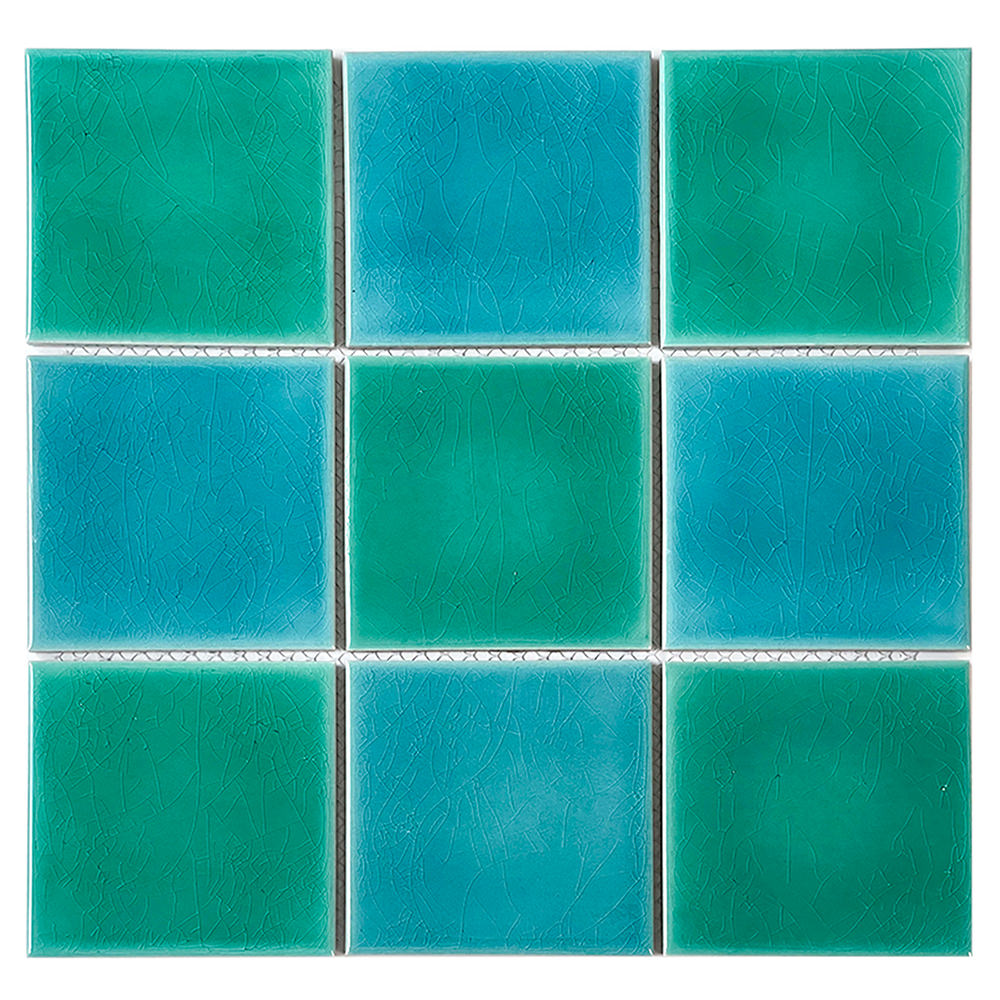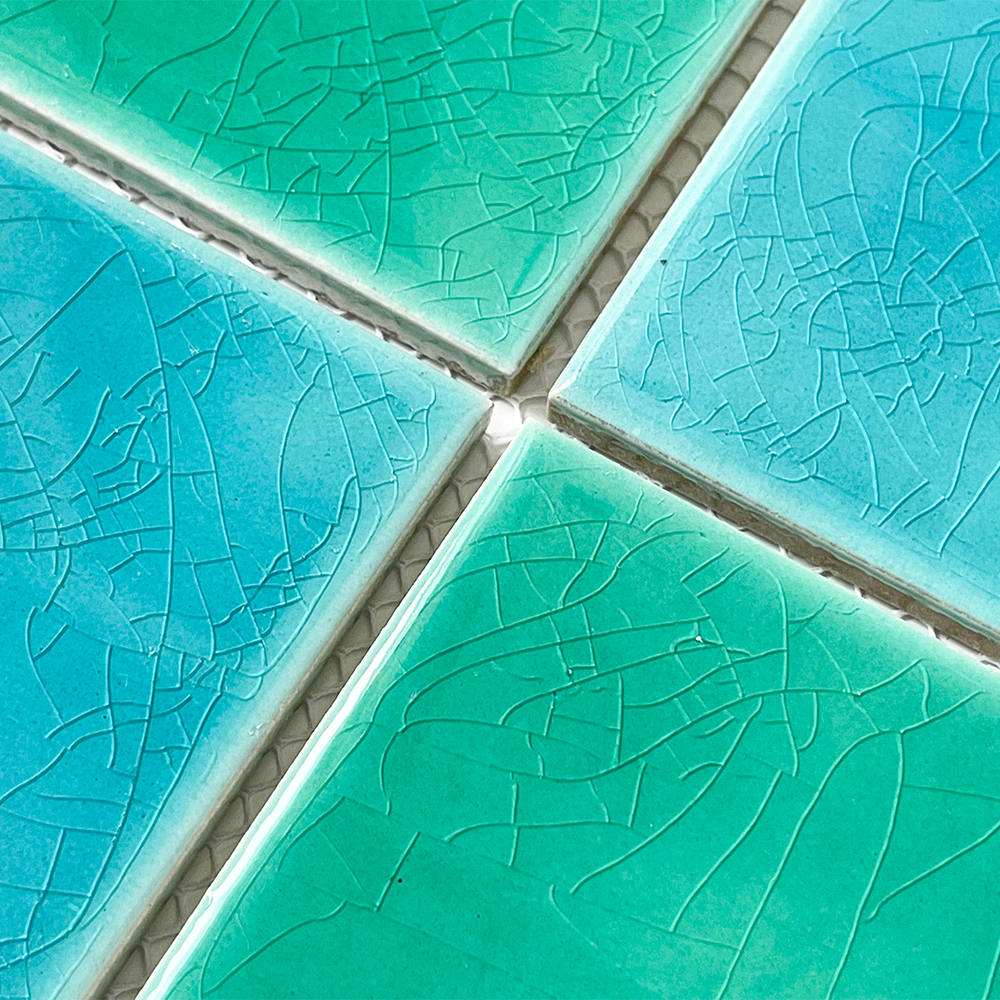Small Ceramic Tiles Mosaic in 2022 China
2022.04.28 / By hqt

What is ceramic tile and what is it made of?
U4002 Best Ceramic Mosaic Tile
Small ceramic tiles mosaic in 2022 is fired clay plates. Most often they are square and rectangular in shape, but can be in the form of a complex geometric mosaic. It can be common to decorate walls and floors both indoors and outdoors.
Latest Tile Perfections
Ceramic tiles usually come from a mixture of different materials:
- Clay or clay materials (it is convenient for them to give the desired shape due to its high humidity)
- Quartz raw materials (with the help of it they create a kind of skeleton of the product and form its strength)
- Materials with feldspars or carbonates (thanks to them, when firing, we get a vitreous and dense structure)
Small ceramic tiles mosaic in 2022
Stages of production of ceramic tiles:
Extraction of raw materials, clay in particular
Different deposits have different characteristics of clay, and therefore manufacturers carefully monitor that nothing is mixed during storage.
Mixture preparation
This is where the magic begins, because all the ingredients must be properly prepared (washed, chopped, moistened) and only then mixed in the correct proportion without adding impurities. In the end, a homogeneous mass comes.
Forming of products carries out by two methods:
- pressing and
- extrusion
Moreover, if with the first method you can only produce tiles of a standard shape, then extrusion allows you to make thicker or even convex and concave products. This is how clinker tiles come.
Drying the product removes all excess moisture, which was necessary in the previous step. If you let this process take its course, then defects, such as cracks, may appear on the tile. In modern industries, this stage takes place in special rooms, where hot air flows supply to the products.
This follows by firing, during which the tile undergoes “shrinkage”, and each time is unique. As a result of this stage, each tile receives its own caliber, which is very important when sorting products into batches.
Small ceramic tiles mosaic in 2022 with ornament
Application of glaze, vitreous protective and decorative coating: The color of the glaze comes by adding salts and metal oxides, for example, cobalt gives a blue color, chromium - green, iron - red. To date, there are several dozen ways to apply glazes to the surface of ceramic tiles.
Burning: To bring together all the ingredients that listed above, and gives the future product the characteristics inherent in ceramic tiles, each product fires. Small ceramic tiles mosaic in 2022 comes at temperatures from 900 to 1300 ° C.

After the tiles have cooled smoothly to normal temperature, they are sorted and packaged for further storage and transportation. At this stage, it is important to get rid of defective products, choose better quality tiles and group tiles of the same grade in batches by caliber and tone.
Types of ceramic tiles
Ceramic tiles designed for indoor wall cladding. Enamel gives the tile shine and allows you to display the pattern of any design, and also protects the ceramic body of the tile from moisture penetration. The main formats for the production of tiles: 20x20 cm, 20x25 cm, 25x33.3 cm.
Outwardly, small ceramic tiles mosaic in 2022: relatively small thickness; red-brown clay base; light weight; glossy shiny enamel. Bicottura usually comes in collections consisting of several colors: lighter - most often basic in a series and additional - darker and with a large number of decorated elements.
Bicottura is common for wall cladding in interiors, sometimes for flooring (if the selected series is recommended for such use), but only in those rooms that do not directly intersect with the street and where there is no risk of damage to the enamel by mechanical particles (for example, sand, dust).
Antique effect tiles
This is an enamelled ceramic tile designed for both wall cladding and floor tiling. Some of its types are frost-resistant and, accordingly, allow the use of this series indoors and outdoors.
The main differences between bicottura and monocottura:
- high hardness of the material
- availability of series with low water absorption
- frost-resistant qualities
- thicker and more durable tile base
- harder, wear-resistant enamel.
Small ceramic tiles mosaic in 2022 is common for facing all types of surfaces in interiors, and especially resistant types of this tile can be common as a floor covering in public places with not very intensive traffic.
Wear-resistant tiles
gres dyed through the body is a non-enamelled single-fired ceramic tile made from light-coloured clays. According to the type of surface, ceramic granite is divided into several main types:
Matte - tiles with such a surface are not further processed after leaving the oven, so they have a natural look.
Polished - the raw surface of the gres is cut evenly and then brightened. As a result, the tile becomes sparkling. After polishing, a composition is applied to the product, which closes the microspores and makes the surface less susceptible to contamination.
Semi-polished small ceramic tiles mosaic in 2022 come by cutting off a smaller top layer of gres using surface grinding technology. Usually uneven tiles are treated in this way, resulting in a spectacular combination of polished and matte areas. The surface of lappated ceramic granite is easier to clean from dirt.
Cotto small ceramic tiles mosaic in 2022
These are generally unglazed single-fired ceramic tiles. It is made from red clay by extrusion - punching through a square, rectangular or, for example, hexagonal shape. Cotto is mainly common for flooring. The extrusion method allows you to get tiles of the most bizarre configuration. Most popular sizes: 25x25, 30x30, 20x40 and 40x60 cm.
Clinker
Clinker is a single-fired ceramic tile with a dandified base, which is produced using the extrusion method as well as pressing technology. Sometimes it is enameled or coated with the so-called "salt" - a thin layer of transparent glass. Typically, clinkers are common for flooring inside and outside, as well as in the construction of pools - in the decoration of plinths, corners, drains, steps and various connecting elements.
Majolica Ceramic tiles
-These tiles have good structure. Due to the porous base, majolica easily absorbs water, so it can only be common for finishing interior walls in dry rooms. Despite the limited area of use and energy-intensive double firing, majolica is in steady demand due to its high decorative qualities, strongly associated with antiquity.

